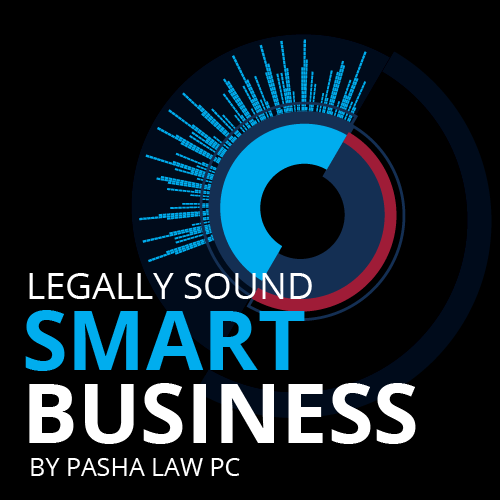Coca-Cola’s recipe for its soda is supposed to be one of the best kept secrets ever. The original recipe is said to be kept in a vault in the company’s Atlanta home where visitors to the World of Coca-Cola can see it (the vault – not the recipe). Coca-Cola goes above and beyond to protect its trade secret because that is how the company separates itself from its competitors.
Trade secret theft is a big deal, and it is more common than you might think. While hiding your trade secrets in a vault is probably not a step you need to take, there are plenty of things that people need to do in order to make sure that any and all trade secrets are protected.
Defining Trade Secrets
Let’s discuss exactly what constitutes a trade secret anyway. The basic definition used by the World Intellectual Property Organization is that a trade secret is any confidential business information that provides a competitive advantage.
The Uniform Trade Secrets Act, which has been adopted by the majority of the states, has a pretty similar, though more in depth, definition.
There are a few key and terms here that help clear up what exactly a trade secret is.
For starters, notice the word confidential. To be considered a trade secret, the business information in question can’t be something you are broadcasting. Using the Coke recipe as an example, you see what this means. Coca-Cola does not go around telling people just how to make their famous beverage. Nope. They keep it locked up in a vault where only those people that fall under the need to know category ever see it.
The second term you want to pay attention to here is competitive advantage. A trade secret helps set your business apart from your competitors. With Coca-Cola, the way the drink tastes is what makes people want it. People who prefer the taste of Coke to the taste of Pepsi will buy a Coca-Cola product before they buy the company’s competitor’s product. So the recipe gives the company that necessary competitive advantage.
Courts have interpreted a lot of different types of business information to be considered trade secrets. For example, all of the following have at one point or the other been considered a trade secret:
- Specific sales processes.
- Client and supplier lists.
- Recipes.
- Manufacturing processes.
Pretty much every business has something that might be considered a trade secret. However, in order to get that trade secret protected, you have to take steps to actively keep it safe.
Trade Secret Theft
There are basically three elements that must be present in order for a trade secret theft to have occurred.
- The information alleged to have been stolen must qualify as a trade secret.
- The trade secret’s owner must have taken reasonable steps to have protected that information.
- The trade secret must have wrongfully been taken.
Notice on that last one that you see the word wrongfully. That’s important. Let’s say you are trying to protect a client list, and your competitor found a copy of it on the Internet doing a search anybody could have done (i.e., they weren’t hacking into your system.)
In that case, it wasn’t wrongfully taken. This one can kind of go hand in hand with the second element in some circumstances because if you aren’t taking reasonable steps to guard your information, it makes it easier for that information to be taken without someone having wrongfully taken it.
Case Studies in Trade Secret Theft
One way a trade secret theft can occur is through an employee. Employees are often given access to confidential information in order to properly perform their jobs. Once they have that information, you have to trust they don’t give it away to the competition.
Case in point: GlaxoSmithKline scientist Yu Xue.
Xue is considered to be one of the world’s top protein biochemists. She used to work for GlaxoSmithKline. However, recently, she, along with four others, were charged with scheming to steal the company’s trade secrets.
GlaxoSmithKline is a biopharmaceutical company, and many of the trade secrets that Xue and her co-conspirators were accused of taking were created in order to fight cancer and other life-threatening diseases.
According to the US Attorney’s Office, Xue performed this theft by downloading confidential information that she had emailed and then worked with the others to set up corporations where they then attempted to sell the confidential information online to the company’s competitors in China.
A former GlaxoSmithKline scientist, Lucy Xi, was also accused of downloading confidential information.
The confidential information in question, which as mentioned, has to do with cancer medication, is highly confidential. Research of this nature often costs companies billions of dollars as well as years of study in order to get it right. That is why protecting the information is so vitally important.
This is just one case in many. Cases pop up with similar problems all the time. Outside competitors could be trying to take your trade secrets. Current and former employees might accidently be giving outsiders access to it. Similarly, current and former employees might be knowingly doing so as well.
What this should show you is that trade secret theft can cost you a lot, so you need to take steps to ensure your trade secrets are being protected.
6 Steps to Take to Protect Your Trade Secrets
It is important to take steps to protect your trade secrets both because you don’t want that information out there with your competition and because if you ever do have to go to court about a potential trade secret theft, you are going to have to prove that you took steps to protect the confidential information.
There are many, many things you can do to protect yourself. Below are six big things you should definitely be doing. However, there are many more as well.
It is important to remember, though, that the steps only have to be reasonable. You don’t have to spend millions of dollars to protect a secret that is only worth $500,000. Coca-Cola has a vault to protect its recipe (at least so they say. Who knows where the recipe really is.) That doesn’t mean you have to go out and buy a vault to put all your confidential information in, though.
All you have to do is take the steps that are reasonable for you and your secrets. Use the below as guidance, and when in doubt, make sure you seek out some legal guidance.
- Make sure your employee’s sign and understand confidentiality agreements. I could do an entire post on the differences between various types of agreements you might want an employee (or perhaps even a potential employee) to sign before they come and work for you. There are non-competes, non-disclosures, confidentiality agreements, etc. However, that is a post for another day. For now, let’s just say that you need to make sure
- You have the right agreements;
- The agreements are legally enforceable;
- The right people are signing the agreements; and
- That those people understand what the agreements mean.
- Take all of the proper security measures reasonably needed. Take steps to make sure that your information is actually protected. This might mean don’t leave them out in the open where anybody can wonder in and see them. It might mean that you ensure your networks are all properly secured so that they aren’t easily hacked. Whatever you need to do to reasonably protect your information, just make sure you are doing it.
- Train your employees in how to keep information safe (and how to know what is confidential in the first place.) A lot of times when an employee leaks confidential information, they are intending to do so. However, sometimes they don’t realize they are being careless and letting information out. In order to counteract this, make sure any employee who is working with confidential information is trained in how to protect that information. Part of that training should also include educating employees in what exactly constitutes confidential information that they need to work to protect.
- Mark confidential information properly – especially when you have to share it with outside sources. Did you know that if you ever get inspected by the Occupational Safety and Health Administration, you can have your trade secrets protected? The organization might ask to look at a manufacturing process, for example, that is protected. You can mark the information as protected in order to make sure it remains a secret. However, marking confidential information as confidential also helps make sure employees know what is protected as well.
- Keep trade secrets between only those who need to know them. The fewer people who know something, the less it is likely to get out. Not only that, but if it does get out, the easier it will be to pinpoint the culprit. You can’t protect trade secrets by just not letting anybody know them ever. At some point, someone will need to know it in order to perform their job functions. However, if you only divulge information to employees who need to know it, as opposed to just telling everyone everything the day they start working for you, it will be a lot easier to keep trade secrets safe.
- Follow proper steps when an employee is leaving. When an employee is leaving, whether voluntarily or not, make sure you take the time to explain to them what their confidentiality agreement means and what the legal consequences could be for violating the agreement. Also, make sure that you remove the employee’s access to the information in as timely a manner as possible.
Final Thoughts
You want to protect your business, and a big part of that means protecting your business’s trade secrets. However, with a few easy steps, this does not have to be hard. Coca-Cola has been doing it for a long time. You can too.


![Employers vs. Employees: When Are Employment Restrictions Fair? [e318]](https://www.pashalaw.com/wp-content/uploads/2022/05/Pasha_LSSB_EmployeesVsEmployers_banner-1-1024x723.jpg)


![How to Protect Your Trade Secrets [e146] How to Protect Your Trade Secrets](https://www.pashalaw.com/wp-content/uploads/2015/02/How-to-Protect-Your-Trade-Secrets-1024x682.jpg)





![Law in the Digital Age: Exploring the Legal Intricacies of Artificial Intelligence [e323]](https://www.pashalaw.com/wp-content/uploads/2023/11/WhatsApp-Image-2023-11-21-at-13.24.49_4a326c9e-300x212.jpg)
![Unraveling the Workforce: Navigating the Aftermath of Mass Layoffs [e322]](https://www.pashalaw.com/wp-content/uploads/2023/07/Untitled-design-23-300x212.png)
![Return to the Office vs. Remote: What Can Employers Legally Enforce? [e321]](https://www.pashalaw.com/wp-content/uploads/2023/01/Pasha_LSSB_321_banner-300x212.jpg)
![Explaining the Hans Niemann Chess Lawsuit v. Magnus Carlsen [e320]](https://www.pashalaw.com/wp-content/uploads/2022/10/LAWYER-EXPLAINS-7-300x169.png)
![California v. Texas: Which is Better for Business? [313]](https://www.pashalaw.com/wp-content/uploads/2021/07/Pasha_LSSB_CaliforniaVSTexas-300x212.jpg)
![Buyers vs. Sellers: Negotiating Mergers & Acquisitions [e319]](https://www.pashalaw.com/wp-content/uploads/2022/06/Pasha_LSSB_BuyersVsSellers_banner-300x212.jpg)
![Employers vs. Employees: When Are Employment Restrictions Fair? [e318]](https://www.pashalaw.com/wp-content/uploads/2022/05/Pasha_LSSB_EmployeesVsEmployers_banner-1-300x212.jpg)
![Vaccine Mandates Supreme Court Rulings [E317]](https://www.pashalaw.com/wp-content/uploads/2022/02/WhatsApp-Image-2022-02-11-at-4.10.32-PM-300x212.jpeg)
![Business of Healthcare [e316]](https://www.pashalaw.com/wp-content/uploads/2021/11/Pasha_LSSB_BusinessofHealthcare_banner-300x212.jpg)
![Social Media and the Law [e315]](https://www.pashalaw.com/wp-content/uploads/2021/10/WhatsApp-Image-2021-10-06-at-1.43.08-PM-300x212.jpeg)
![Defining NDA Boundaries: When does it go too far? [e314]](https://www.pashalaw.com/wp-content/uploads/2021/09/Pasha_LSSB_NDA_WordPress-2-300x212.jpg)
![More Than a Mistake: Business Blunders to Avoid [312] Top Five Business Blunders](https://www.pashalaw.com/wp-content/uploads/2021/06/Pasha_LSSB_Blunders_WP-1-300x212.jpg)
![Is There a Right Way to Fire an Employee? We Ask the Experts [311]](https://www.pashalaw.com/wp-content/uploads/2021/02/Pasha_LSSB_FireAnEmployee_Website-300x200.jpg)
![The New Frontier: Navigating Business Law During a Pandemic [310]](https://www.pashalaw.com/wp-content/uploads/2020/12/Pasha_LSSB_Epidsode308_Covid_Web-1-300x200.jpg)
![Wrap Up | Behind the Buy [8/8] [309]](https://www.pashalaw.com/wp-content/uploads/2020/11/Pasha_BehindTheBuy_Episode8-300x200.jpg)
![Is it all over? | Behind the Buy [7/8] [308]](https://www.pashalaw.com/wp-content/uploads/2020/09/iStock-1153248856-overlay-scaled-300x200.jpg)
![Fight for Your [Trademark] Rights | Behind the Buy [6/8] [307]](https://www.pashalaw.com/wp-content/uploads/2020/07/Fight-for-your-trademark-right-300x200.jpg)
![They Let It Slip | Behind the Buy [5/8] [306]](https://www.pashalaw.com/wp-content/uploads/2020/06/Behind-the-buy-they-let-it-slip-300x200.jpg)
![Mo’ Investigation Mo’ Problems | Behind the Buy [4/8] [305]](https://www.pashalaw.com/wp-content/uploads/2020/05/interrobang-1-scaled-300x200.jpg)
![Broker or Joker | Behind the Buy [3/8] [304] Behind the buy - Broker or Joker](https://www.pashalaw.com/wp-content/uploads/2020/04/Joker-or-Broker-1-300x185.jpg)
![Intentions Are Nothing Without a Signature | Behind the Buy [2/8] [303]](https://www.pashalaw.com/wp-content/uploads/2020/04/intentions-are-nothing-without-a-signature-300x185.jpg)
![From First Steps to Final Signatures | Behind the Buy [1/8] [302]](https://www.pashalaw.com/wp-content/uploads/2020/04/first-steps-to-final-signatures-300x185.jpg)
![The Dark-side of GrubHub’s (and others’) Relationship with Restaurants [e301]](https://www.pashalaw.com/wp-content/uploads/2015/04/When-Competition-Goes-Too-Far-Ice-Cream-Truck-Edition-300x201.jpg)
![Ultimate Legal Breakdown of Internet Law & the Subscription Business Model [e300]](https://www.pashalaw.com/wp-content/uploads/2019/05/Ultimate-Legal-Breakdown-of-Internet-Law-the-Subscription-Business-Model-300x196.jpg)
![Why the Business Buying Process is Like a Wedding?: A Legal Guide [e299]](https://www.pashalaw.com/wp-content/uploads/2019/03/futura-300x169.jpg)
![Will Crowdfunding and General Solicitation Change How Companies Raise Capital? [e298]](https://www.pashalaw.com/wp-content/uploads/2018/11/Will-Crowdfunding-and-General-Solicitation-Change-How-Companies-Raise-Capital-300x159.jpg)
![Pirates, Pilots, and Passwords: Flight Sim Labs Navigates Legal Issues (w/ Marc Hoag as Guest) [e297]](https://www.pashalaw.com/wp-content/uploads/2018/07/flight-sim-labs-300x159.jpg)
![Facebook, Zuckerberg, and the Data Privacy Dilemma [e296] User data, data breach photo by Pete Souza)](https://www.pashalaw.com/wp-content/uploads/2018/04/data-300x159.jpg)
![What To Do When Your Business Is Raided By ICE [e295] I.C.E Raids business](https://www.pashalaw.com/wp-content/uploads/2018/02/ice-cover-300x159.jpg)
![General Contractors & Subcontractors in California – What you need to know [e294]](https://www.pashalaw.com/wp-content/uploads/2018/01/iStock-666960952-300x200.jpg)
![Mattress Giants v. Sleepoplis: The War On Getting You To Bed [e293]](https://www.pashalaw.com/wp-content/uploads/2017/12/sleepopolis-300x159.jpg)
![The Harassment Watershed [e292]](https://www.pashalaw.com/wp-content/uploads/2017/12/me-2-300x219.jpg)
![Investing and Immigrating to the United States: The EB-5 Green Card [e291]](https://www.pashalaw.com/wp-content/uploads/2012/12/eb-5-investment-visa-program-300x159.jpg)
![Responding to a Government Requests (Inquiries, Warrants, etc.) [e290] How to respond to government requests, inquiries, warrants and investigation](https://www.pashalaw.com/wp-content/uploads/2017/10/iStock_57303576_LARGE-300x200.jpg)
![Ultimate Legal Breakdown: Employee Dress Codes [e289]](https://www.pashalaw.com/wp-content/uploads/2017/08/Ultimate-Legal-Breakdown-Template-1-300x159.jpg)
![Ultimate Legal Breakdown: Negative Online Reviews [e288]](https://www.pashalaw.com/wp-content/uploads/2017/06/Ultimate-Legal-Breakdown-Online-Reviews-1-300x159.jpg)
![Ultimate Legal Breakdown: Social Media Marketing [e287]](https://www.pashalaw.com/wp-content/uploads/2017/06/ultimate-legal-breakdown-social-media-marketing-blur-300x159.jpg)
![Ultimate Legal Breakdown: Subscription Box Businesses [e286]](https://www.pashalaw.com/wp-content/uploads/2017/03/ultimate-legal-breakdown-subscription-box-services-pasha-law-2-300x159.jpg)
![Can Companies Protect Against Foreseeable Misuse of Apps [e285]](https://www.pashalaw.com/wp-content/uploads/2017/01/iStock-505291242-300x176.jpg)
![When Using Celebrity Deaths for Brand Promotion Crosses the Line [e284]](https://www.pashalaw.com/wp-content/uploads/2017/01/celbrity-300x159.png)
![Are Employers Liable When Employees Are Accused of Racism? [e283] Racist Employee](https://www.pashalaw.com/wp-content/uploads/2016/12/Are-employers-liable-when-an-employees-are-accused-of-racism-300x159.jpg)
![How Businesses Should Handle Unpaid Bills from Clients [e282] What to do when a client won't pay.](https://www.pashalaw.com/wp-content/uploads/2016/12/How-Businesses-Should-Handle-Unpaid-Bills-to-Clients-300x159.png)
![Can Employers Implement English Only Policies Without Discriminating? [e281]](https://www.pashalaw.com/wp-content/uploads/2016/11/Can-Employers-Impliment-English-Only-Policies-Without-Discriminating-300x159.jpg)
![Why You May No Longer See Actors’ Ages on Their IMDB Page [e280]](https://www.pashalaw.com/wp-content/uploads/2016/10/IMDB-AGE2-300x159.jpg)
![Airbnb’s Discrimination Problem and How Businesses Can Relate [e279]](https://www.pashalaw.com/wp-content/uploads/2016/09/airbnb-300x159.jpg)
![What To Do When Your Amazon Account Gets Suspended [e278]](https://www.pashalaw.com/wp-content/uploads/2016/09/What-To-Do-When-Your-Amazon-Account-Gets-Suspended-1-300x200.jpg)
![How Independent Artists Reacted to Fashion Mogul Zara’s Alleged Infringement [e277]](https://www.pashalaw.com/wp-content/uploads/2016/08/How-Independent-Artists-Reacted-to-Fashion-Mogul-Zaras-Alleged-Infringement--300x159.jpg)
![Can Brave’s Ad Replacing Software Defeat Newspapers and Copyright Law? [e276]](https://www.pashalaw.com/wp-content/uploads/2016/08/Can-Braves-Ad-Replacing-Software-Defeat-Newspapers-and-Copyright-Law-300x159.jpg)
![Why The Roger Ailes Sexual Harassment Lawsuit Is Far From Normal [e275]](https://www.pashalaw.com/wp-content/uploads/2016/07/WHY-THE-ROGER-AILES-SEXUAL-HARASSMENT-LAWSUIT-IS-FAR-FROM-NORMAL-300x159.jpeg)
![How Starbucks Turned Coveted Employer to Employee Complaints [e274]](https://www.pashalaw.com/wp-content/uploads/2016/07/iStock_54169990_LARGE-300x210.jpg)
